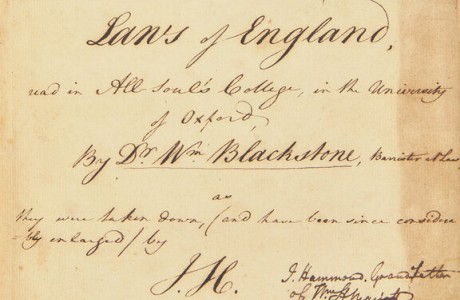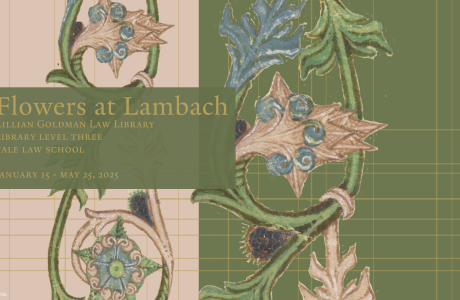Medieval Manuscripts in Law Book Bindings, no. 17

Fragment: Decretales Gregorii IX, with gloss (Bologna or Avignon)
Date: c. 1240-50
Found in: Massa, Antonio. De usuris. Rome: Valerio Dorico, 1557.

The landscape of medieval jurisprudence changed radically in the 12th century, when the monk Gratian’s revolutionary collection of canons and decrees known as the Decretum began to circulate, quickly becoming the core textbook for canon law. During the decades that followed, scholars and students identified many issues that current canon law was unable to resolve, and because of this, more and more bishops sent queries to the papacy seeking guidance for cases in their diocesan courts. The letters that the popes sent back to these bishops were known as “decretals.” Since there was no system of court reporting, jurists who wished to keep abreast of the law would copy any decretal they came across. These informal private collections rapidly gave way to more systematic compilations that found their way into the canon law curriculum. Concerned by the lack of an “official” body of updated canon law, Pope Gregory IX instructed the canonist Raymond of Peñafort to assemble an authoritative supplement to the Decretum. The Decretales Gregorii IX (commonly referred to as the Liber extra) was made official canon law in September 1234.
The fragment visible here contains the end of Book 1, Title 14 and the beginning of Book 1, Title 15 in the second column, along with the standard academic commentary on that passage (known as the “gloss”) in the first column. The standard gloss for the Decretales Gregorii IX was written by the jurist Bernard of Parma in the 1260s. The beginning of Title 15 (on anointing the sick) is marked by illuminated initials in both the gloss and the main text. Inside the front cover of the wrapper (not visible here), a medieval reader has carefully marked a passage (from X 1.14.14) using a drawing of a small hand (a notation called a manicula). The passage reads, in translation, “For it is preferable, especially in the ordination of priests, to have a few good ministers than many bad ones, for if a blind man leads another blind man, both will fall into the pit.”
– Notes by Benjamin Yousey-Hindes, Stanford University
POSTSCRIPT: Richard Rouse (UCLA) believes the manuscript originates in Italy or Avignon; Susan L’Engle (Saint Louis University) believes the manuscript is from Bologna and dates it 1240-1250.
Larger versions of this and other images are available from the Medieval binding fragments gallery of the Rare Book Collection’s Flickr site. If you can provide additional information about the manuscript fragment displayed here, you are invited to send an email to .[at]yale.edu>
“Reused, Rebound, Recovered: Medieval Manuscript Fragments in Law Book Bindings” is curated by Benjamin Yousey-Hindes and Mike Widener, and is on display through May 2010 in the Rare Book Exhibition Gallery, Level L2, Lillian Goldman Law Library, Yale Law School.


